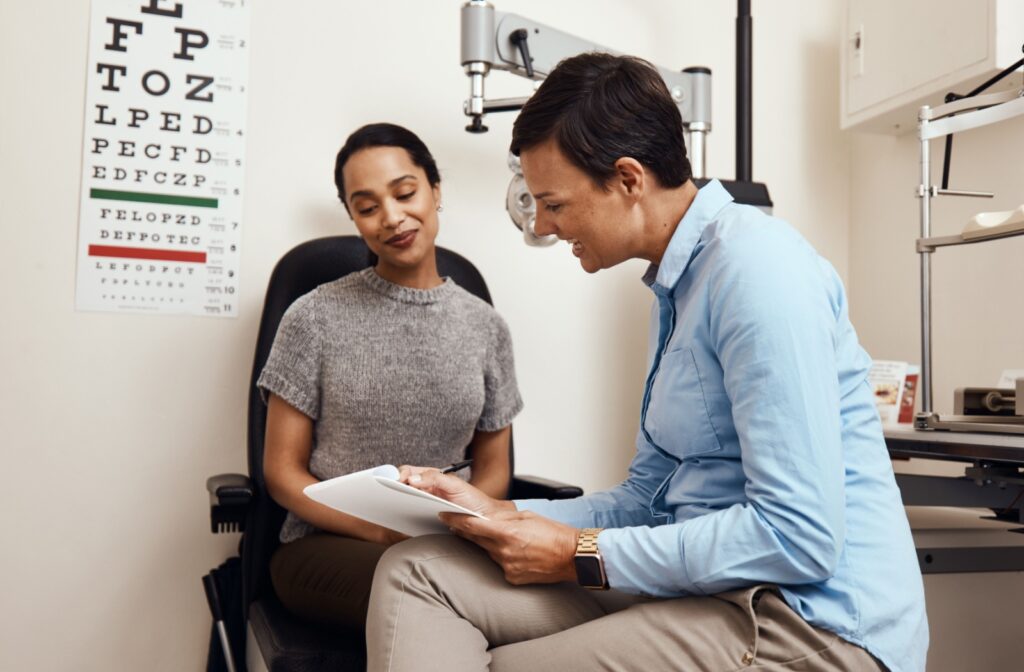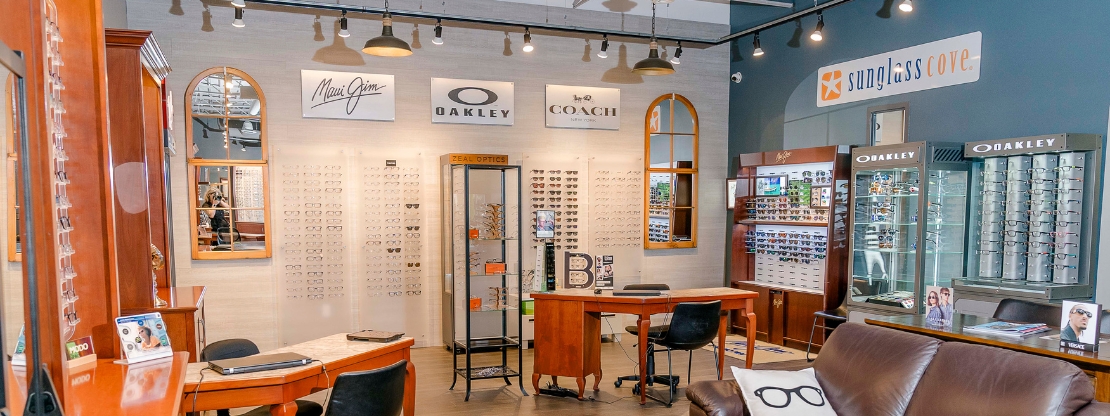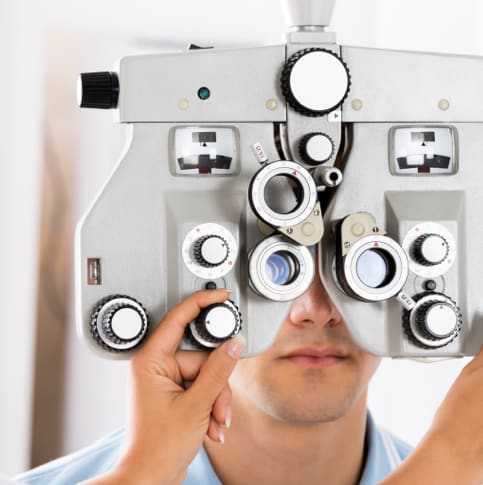Eye care is an important part of your well-being. During your appointment, your optometrist can detect potential vision-threatening issues long before they affect your quality of life.
However, it can be complicated trying to figure out if you’re covered under OHIP. If you’re in Ontario and curious about your eye care coverage under OHIP, you’re not alone.
OHIP covers eye exams, but only for specific groups of people. Coverage depends on your age or if you have certain medical conditions. Most adults between 20 and 64 years old will need to pay out of pocket or use private insurance to cover their visits. If you’re ever unsure, contact your optometrist before your appointment.
OHIP will cover eye emergencies if being examined by your family doctor, an urgent care clinic, or emergency room, but not always by your optometrist.
Who Qualifies for OHIP Coverage for Eye Exams?
OHIP, the Ontario Health Insurance Plan, covers a range of different services. However, when it comes to eye care, it can be complicated and varies by age and medical conditions.
Children & Teens Age 19 or Younger
- Covered for one routine eye exam every 12 months, as well as any minor assessments needed.
Adults Age 20 Years & Older
- Adults without a qualifying medical condition are not covered.
Seniors Age 65 & Older
- Eligible for one comprehensive eye exam every 18 months and 2 follow-up exams.
What Medical Conditions are Eligible for OHIP Coverage?
The following conditions qualify for eye exam coverage:
- Diabetes
- Glaucoma
- Cataracts
- Retinal disease
- Corneal disease
- Optic pathway disease
- Uveitis
- Cranial nerve palsy
- If you take the medications hydroxychloroquine, chloroquine, ethambutol, or tamoxifen (for ocular drug toxicity screening)
If you have any of these conditions, OHIP will cover one eye exam every 12 months and 2 additional follow-up assessments.
What Expenses Are Not Covered by OHIP?
If you don’t meet OHIP’s coverage criteria, you’ll need to prepare for any costs incurred during your eye exam or related procedures. Additional services not covered by OHIP include:
- Fittings for contact lenses
- Diagnostic testing
- Retinal imaging
- Purchasing glasses or contacts
- Myopia management
- Vision therapy
- Axial length measurements
- Foreign body removal
- Dry eye assessments and treatments
It is best to confirm your costs when booking your appointment to avoid surprises. Costs vary by clinic, so it helps to call ahead and ask about fees.
Your optometrist can break down the costs involved and what you can expect from your visit.

What Options Do You Have If You’re Not Covered?
If you’re not eligible to be covered for eye exams under OHIP, you may still have options available to you.
Eye care services are usually included in many employer health benefit plans. Additionally, there are a range of private health benefit providers, such as Sunlife or Manulife that cover various eye care needs.
You may also be eligible for additional eye care coverage if you are on the Ontario Disability Support Program (ODSP) or Ontario Works program.
What Happens During an OHIP-Covered Eye Exam?
If you’re eligible for OHIP coverage, your exam will follow a straightforward process. Make sure to bring your valid Ontario health card and a list of all your current medications to the appointment.
During a comprehensive eye exam, you can expect the following steps:
- A vision check to measure how well you can see at various distances.
- An assessment for potential eye diseases, such as glaucoma or cataracts, to safeguard your ocular health.
- A discussion about your overall eye health, which includes day-to-day habits and family history.
This thorough approach helps keep your eyes and vision in good shape. Remember—eye exams are an essential part of your overall healthcare.
Why Regular Eye Exams Matter, Even Without OHIP
Even if OHIP doesn’t cover your visit, regular eye exams are still important for your health. They help catch serious conditions early, often before symptoms even appear. You should visit your optometrist at least once every year for a comprehensive eye exam.
Routine exams can also detect broader health issues, like high blood pressure or diabetes, through signs spotted during your check-up. If cost concerns are holding you back, private insurance, workplace benefits, or budgeting yearly for an exam can help provide flexibility.
Our team at Oxford Optometry is ready to help you with your eye care needs. Book your next appointment with us today, and let’s work together to keep your vision clear!


















